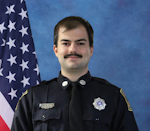12 Tactics for Hurricane Response by Small/Rural Fire Departments
The following are the tactics that my fellow responders and I utilized in Sorrento, LA, mostly on the ground, during Hurricane Ida (Aug. 26–Sept. 1, 2021). Please note that these tactics don’t encompass matters that pertain to flooding or coordination with state and federal responders.
1. Establish an EOC within the fire station. FEMA defines an emergency operations center (EOC) as a physical, virtual or hybrid location for carrying out the principles of emergency preparedness and emergency management or disaster management at a strategic level during an emergency.
2. Make note of the nearest emergency shelter. Identify its address and ingress point and learn the procedure of arriving and being processed in the chance that you must direct someone to it.
3. Stock the station. Before the storm, ensure that the station has a supply of food (preferably nonperishables), charcoal, matches, and fuel and oil. Fuel for small engines and other uses might be a necessity, because fuel sales might be limited during and after the storm. As was the case with Hurricane Ida, it’s possible that no gasoline stations will be open amid drivers fleeing from the storm-affected area. They might run out of fuel and be stranded in your responding area. Where permitted, a small amount of fuel—enough to get evacuees to the nearest designated shelter—should be kept by the department and can serve to be donated to these people if absolutely needed. Understand that these people have no alternatives.
4. Measure wind speeds. During the approach of the hurricane, wind speeds should be measured in the EOC of the fire department or through the department’s central dispatch. A continuous and updating windspeed for the area(s) of response should be open and available at request of any incident commander (IC). Departments should implement a wind curfew that’s based on wind speed and shouldn’t respond to any calls once wind speeds reach that measurement.
5. Risk benefit analysis for calls. If wind speeds aren’t an issue, calls should be responded to based on a risk benefit analysis. Incoming calls likely will be plentiful; therefore, calls of the highest priority must come first and only if the IC deems it to be safe enough to respond. The safety of the responder always is of primary importance.
6. Request a radio channel for hurricane response. This is important, because radio traffic during response likely will be high, particularly between responders. It also is beneficial for a channel to be designated that neighboring fire departments can scan and respond on, to work seamlessly. Further, it also is a good idea to link the IC to the highest government official in the responding area (mayor, city hall, office of mayor) via radio. Plan which government agencies might need to be contacted should cell signal drop. Dispatch should have access to these agencies, but it’s a good idea to have the agencies’ contact information written down, even if you’re unable to call them right away/instantly during chaos.
7. Designate a safe spot in the firehouse for civilians. Also, have the capacity to provide medical care to such individuals who seek refuge, even if all equipment-carrying apparatus are gone.
8. Cell signal likely will be dropped. Apps that advertise the capability to allow communication without signal/data can be unreliable. It’s essential to keep charged batteries and pagers and to rely closely on them for communications between dispatch, the EOC/IC and fellow responders.
Don’t hesitate to ask for clarity if a transmission is unclear, because there likely will be a special radio channel to avoid radio chatter.
9. Downed power lines. It can be expected that there will be downed power lines. Whether the lines still are energized is too risky to gamble, so responding units should attempt to go around the area, with due regard, or exit their vehicle, grab medical equipment and proceed on foot to the scene. The location of downed lines and the decision to exit the vehicle can be relayed to dispatch.
10. Downed trees. Trees also can be expected to have fallen or be close to falling. Trees can cause significant damage to property and life. Take caution when you approach them directly during/after a storm. Attempt to stay away from areas that a tree might hit.
Fallen trees also might cause a huge response dilemma. Fallen trees over roadways might disable any travel until cleared. It’s important to establish a team that can devote itself to clearing roads to facilitate transport. This team can be composed of internal responders, and the operation usually can be done with small engines that are on board corresponding units. The team should attempt to clear interstate on-ramps first, to allow access to massive highways, then clear roads in order of importance (i.e., busiest highway first, second busiest/most strategically beneficial second and so on). The responding area roads that are blocked with downed trees and/or poles can be marked by the IC on a map of the area and updated as progress is made.
During this assignment, the small-engine team won’t be the primary unit for emergency response. That will be handled by other units, unless deemed pertinent.
The team should be mindful of electrical and other hazards when it performs an operation.
Finally, the team can relay its updates to dispatch and fellow responders.
11. Response from ambulances might cease. This is particularly plausible if your department’s responding area is covered by private ambulance and you don’t have the capacity for hospital transport. In this scenario, the highest qualified medical person who is on scene should advise whether a transport is recommended and then, if your area contains multiple hospitals, decide which hospital is best to receive such patient. The highest qualified medical person should advise family members of the patient of the scenario, advise them to drive the patient to the hospital, and provide instructions on how to get there and where to bring the patient. A total loss of internet might make this more difficult.
12. Units might become separated during response. The IC should be aware of which responders are on which scenes and be able to delegate resources where needed/clarify locations.
Disclaimer: These tactics aren’t intended to be used as direct advice or guidelines, and the writer won’t be held liable if you choose to utilize them.

Nicolas Garon
Nicolas Garon started his firefighting journey as a junior firefighter in 2015 with the Sorrento, LA, Volunteer Fire Department. He now serves as the department’s vice president and junior firefighter coordinator, having served as bylaw revision chairman. Garon graduated from LSU in 2022. While there, he studied principles of emergency management. Presently, Garon is employed by RNR Rescue, which is a rescue company that’s based in Baton Rouge, LA. He is pursuing a law degree from Southern University Law Center.






